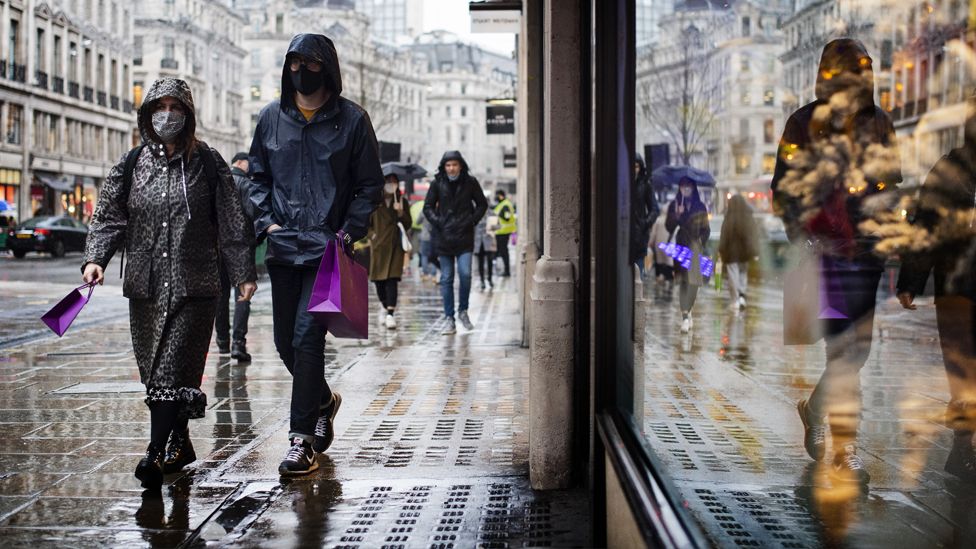Covid: London's coronavirus levels rising, ONS says
- Published

Levels of positive tests are rising in London and could be on the up in the east of England, according to data from the Office for National Statistics.
Figures for the week to 5 December, as England's second lockdown was ending, suggest infection levels continued to fall in other regions.
Infection rates are still highest in children of secondary school age, the ONS says.
Across the UK, the picture is mixed, with Wales seeing rising infections.
In Northern Ireland, the percentage of people testing positive continues to fall - while in Scotland it has stayed the same.
The R number - or reproduction number - of the virus is now between 0.9 and 1.0 for the UK - slightly up from 0.8-1.0 last week. But in some regions in the south and east it could be above 1, indicating infections are likely to be growing there.
The ONS figures are one source of data used by the government's scientific advisers to judge the spread of the virus, and take decisions on restrictions on people's daily lives.
They are based on swab tests of thousands of people in households, whether they have symptoms or not. The estimates are thought to give a more accurate picture of how many people are infected with the virus than data on positive tests alone.
Infection levels in London started to rise sharply before the end of lockdown, according to the ONS, after falling in late November.
In all other regions, including the North West and North East, and Yorkshire and the Humber, the percentage of people testing positive is decreasing.
But there are "early signs" rates may be increasing in the east of England, the ONS says.
It estimates:
- one in 115 people have the virus in England
- one in 120 in Scotland
- one in 120 in Wales
- one in 235 in Northern Ireland
The latest estimate of the R number for the UK is up very slightly on the previous week, but still just below 1. This means that the epidemic is still shrinking after lockdown, but very slowly.
This is borne out by the latest Office for National Statistics infection survey. It indicates that cases continued to fall in most of England and Northern Ireland last week.
But the view of the scientific advisory group is that the situation is "fragile". Cases are increasing in London and the east of England - especially among secondary school age children - and previous experience indicates that a surge among older age groups will inevitably follow.
The government's scientific advisers believe that it will be important to keep infection levels as low as possible in the run-up to the holidays. That's because the relaxation of restrictions that permit families to meet over Christmas will accelerate any increase in cases - and lead to another sharp spike in infections early in the New Year.
Data on cases - or confirmed positive tests - suggests areas such as Basildon, Medway and Havering in the south east are now experiencing more than 400 cases per 100,000 people.
England's tiers system is due to be reviewed on 16 December and there have been suggestions that London should be moved from tier two to tier three to avoid a spike in deaths over Christmas.
Kent is already in tier three while Essex is in tier two.
Related Topics
- Published26 November 2020
- Published26 November 2020
- Published6 November 2020
- Published12 November 2020